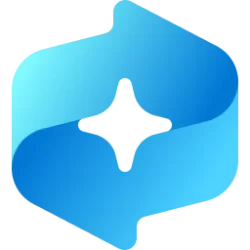Navigation
Install the app
How to install the app on iOS
Follow along with the video below to see how to install our site as a web app on your home screen.
Note: This feature may not be available in some browsers.
More options
Style variation
-
Disable Automatic Windows Updates in Windows 11
This tutorial will show you how to disable Windows Update from automatically downloading and installing updates in Windows 10 and Windows 11.- Brink
- Replies: 17
-
Use ViVeTool to Enable or Disable Hidden Features in Windows 11
This tutorial will show you how to use ViVeTool to enable or disable hidden features in Windows 10 and Windows 11.- Brink
- Replies: 49
-
Restore Classic File Explorer with Ribbon in Windows 11
This tutorial will show you how to restore the classic File Explorer with Ribbon for your account or all users in Windows 11.- Brink
- Replies: 422
-
Create Windows 11 Bootable USB Installation Media
This tutorial will show you how to create a bootable USB flash drive used to install Windows 11 with UEFI support.- Brink
- Replies: 135
-
Uninstall or Reinstall Copilot app
This tutorial will show you different ways to uninstall or reinstall the Copilot app for your account or all users in Windows 10 and Windows 11.- Brink
- Replies: 0
-
Add or Remove "Learn about this picture" Desktop icon
This tutorial will show you how to add or remove the "Learn about this picture" desktop icon when using Windows Spotlight as your desktop background for your account in Windows 11 and Windows 10.- Brink
- Replies: 27
-
Use SFC to Repair System Files in Windows 11
This tutorial will show you how to run the System File Checker (SFC) tool to repair missing, corrupted, and modified system files in Windows 10 and Windows 11.- Brink
- Replies: 25
-
Download Official Windows 11 ISO file from Microsoft
This tutorial will show you how to download an official Windows Server ISO or Windows 11 64-bit or ARM64 ISO file from Microsoft.- Brink
- Replies: 428
-
Repair Install Windows 11 with an In-place Upgrade
This tutorial will show you how to do a repair install of Windows 11 by performing an in-place upgrade without losing anything.- Brink
- Replies: 339
-
Clean Install Windows 11
This tutorial will show you step by step on how to clean install Windows 11 at boot on your PC with or without an Internet connection and setup with a local account or Microsoft account.- Brink
- Replies: 243
You are using an out of date browser. It may not display this or other websites correctly.
You should upgrade or use an alternative browser.
You should upgrade or use an alternative browser.
Tutorials
Windows 11 tutorials, tricks, tips, and guides.
Filters
Show only:
Loading…
This tutorial will show you how to clear activity history for your account in Windows 11.
Activity history helps keep track of the things you do on your device, such as the apps and services you use, the files you open, and the websites you browse. Your activity history is stored locally on your device, and if you’ve signed in to your device with a Microsoft account or work or school account and given your permission, Windows sends your activity history to Microsoft. Microsoft uses the activity history data to provide you with personalized experiences (such as ordering your activities based on duration of use) and relevant suggestions (such as anticipating what your needs might be based on your activity history).
You can clear and...
This tutorial will show you how to enable or disable sending activity history to Microsoft for your account or all users in Windows 11.
Activity history helps keep track of the things you do on your device, such as the apps and services you use, the files you open, and the websites you browse. Your activity history is stored locally on your device, and if you’ve signed in to your device with a Microsoft account or work or school account and given your permission, Windows sends your activity history to Microsoft. Microsoft uses the activity history data to provide you with personalized experiences (such as ordering your activities based on duration of use) and relevant suggestions (such as anticipating what your needs might be based on...
This tutorial will show you how to make a phone call from your phone in the Phone Link app on your Windows 10 or Windows 11 PC.
With the Phone Link app on your PC linked to your iPhone or Android phone, you can instantly access the Android apps installed on your mobile device right on your Windows 10 or Windows 11 PC. Using a Wi-Fi connection, Apps allows you to browse, play, order, chat, and more — all while using your PC’s larger screen and keyboard.
You can make and receive phone calls through your linked phone via the Phone Link app on your PC.
To make and receive phone calls in the Phone Link app, it is required to have Bluetooth turned on, paired, and connected for both your PC and linked phone. Your PC is required to have a...
This tutorial will show you different ways to find out which file system a connected drive has been formatted with in Windows 11.
A file system enables applications to store and retrieve files on storage devices. Files are placed in a hierarchical structure. The file system specifies naming conventions for files and the format for specifying the path to a file in the tree structure.
Windows 11 supports the FAT, FAT32, exFAT, NTFS, and ReFS file systems for drive volumes or partitions on a disk.
References:
https://learn.microsoft.com/en-us/windows/win32/fileio/file-systems
https://learn.microsoft.com/en-us/previous-versions/windows/it-pro/windows-server-2003/cc778296(v=ws.10)
Option One: Find File System of Drive in Disk...
This tutorial will show you how to add "Restart Explorer" to the desktop context menu of all users in Windows 11.
The explorer.exe process is the user shell for Windows, and is used by such items as the desktop, File Explorer, Start menu, notification area, and taskbar. Restarting the explorer.exe process is to stop and start it to effectively refresh explorer.exe. When the explorer.exe process has been stopped (aka: "end task"), you will see a blank black desktop with your mouse pointer showing until explorer.exe has been started again.
If you are having issues with the explorer.exe process (ex: hang), restarting the explorer.exe process may sort it without having to restart the computer.
If you are applying a registry tweak...
This tutorial will show you how to enable or disable the fingerprint sign-in option and UAC credential provider for all users in Windows 10 and Windows 11.
Credential providers are the primary mechanism for user authentication—they currently are the only method for users to prove their identity which is required for sign in and other system authentication scenarios like UAC.
Microsoft provides a variety of credential providers as part of Windows, such as the facial recognition (Windows Hello), fingerprint recognition (Windows Hello), PIN (Windows Hello), security key, password, and picture password sign-in options.
If your Windows 11 device has a built-in fingerprint sensor or connected fingerprint reader, you can set up the...
This tutorial will show you how to enable or disable the password sign-in option and UAC credential provider for all local accounts in Windows 10 and Windows 11.
Credential providers are the primary mechanism for user authentication—they currently are the only method for users to prove their identity which is required for sign in and other system authentication scenarios like UAC.
Microsoft provides a variety of credential providers as part of Windows, such as the facial recognition (Windows Hello), fingerprint recognition (Windows Hello), PIN (Windows Hello), security key, password, and picture password sign-in options.
You can disable the ability to use a password to sign in to Windows and provide UAC credentials for all local...
This tutorial will show you how to find the IP address of a network printer in Windows 11.
An IP address (Internet Protocol address) is a unique address that identifies a device on the internet or a local network.
You may need your network printer's IP address to connect, troubleshoot, or configure it.
Option One: Find IP Address of Printer in File Explorer
Option Two: Find IP Address of Printer in Settings
Option Three: Find IP Address of Printer in Devices and Printers
Find IP Address of Printer in File Explorer
This option requires the network printer to be connected and running.
1 Open File Explorer (Win+E).
2 Click/tap on Network in the navigation pane of File Explorer. (see screenshot below step 3)
3 Under Printers...
This tutorial will show you different ways on how to manually change the time zone for all users in Windows 11.
A time zone is a geographical region in which the same time is used. Typically, but not always, adjacent time zones are one hour apart. The time in any of the world's time zones can be expressed as an offset from Coordinated Universal Time (UTC).
You can choose to let Windows 11 set your time zone automatically based on your region, or you can set the time zone manually.
Starting with Windows 11 version 22H2 KB5030310 Build 22621.2361, if location settings are disabled, a warning is now shown to the user, urging them to enable location settings to ensure accurate time zone adjustments. This warning provides helpful...
This tutorial will show you how to enable or disable whether the SMB client will require encryption for all users in Windows 11.
Starting with Windows 11 build 25982 (Canary), SMB now supports requiring encryption of all outbound SMB client connections. With this new option, administrators can mandate that all destination servers support SMB 3.x and encryption, and if missing those capabilities, the client won’t connect. This enforces the highest level of network security as well as bringing management parity to SMB signing, which allows both client and server requirements.
SMB Encryption supplies SMB data end-to-end protection from interception attacks and snooping. It first shipped in SMB 3.0 on Windows 8 and Windows Server 2012...
This tutorial will show you how to add or remove folders on Start next to the Power button for your account in Windows 11.
The Start menu is comprised of three sections: Pinned, All apps, and Recommended.
The Start menu contains shortcuts of all your apps, settings, and files.
In Windows 11, you can choose which folders appear at the bottom on Start next to the Power button.
You can add or remove the Settings, File Explorer, Documents, Downloads, Music, Pictures, Videos, Network, and Personal folder folders on Start.
These folders on Start next to the Power button settings are saved to the VisiblePlaces REG_BINARY value in the registry key below for the current user...
Latest Tutorials
-
-
Browsers and Mail Enable or Disable Extensions from Other Stores in Microsoft Edge on Windows 11
- Started by Brink
- Replies: 0
-
-
-
-
Browsers and Mail Enable or Disable Extension Developer Mode in Microsoft Edge on Windows 11
- Started by Brink
- Replies: 0
-
Browsers and Mail Pin or Unpin Extensions on Toolbar in Microsoft Edge on Windows 11
- Started by Brink
- Replies: 4
-
Browsers and Mail Enable or Disable Extensions in Microsoft Edge InPrivate Browsing on Windows 11
- Started by Brink
- Replies: 0
-
-
Browsers and Mail Enable or Disable Extensions in Microsoft Edge on Windows 11
- Started by Brink
- Replies: 0
Tutorial Tags
android
background
battery
bitlocker
bluetooth
boot
color
context menu
copilot
defender
desktop
display
drive
edge
file explorer
folder
hyper-v
icon
keyboard
location
mouse
notepad
notifications
onedrive
outlook
paint
pen
photos
pointer
power
printer
recall
screenshot
search
settings
share
shortcuts
sign-in
sound
start menu
store
taskbar
terminal
theme
touch
usb
voice
wi-fi
widgets
xbox




















